Title : Biology and conservation of mexican podostemaceae
Abstract:
Podostemaceae is the largest family of strictly aquatic angiosperms. They grow in fastflowing oligotrophic rivers or waterfalls. They adhere strongly to rocks by means of unicellular and hapterous hairs, which secrete a mucilaginous substance, once fixed they form a biofilm. They differ from angiosperms, among other things, because there is no double fertilization, nor endosperm formation. Its distribution is mainly tropical and subtropical. Worldwide it has 54 genera and 310 species. They have a high level of local endemism and some species are known from only a small geographic area or even a single river. In the New World there are 135 species and 21 genera. Mexico has 4 genera and 7 species: Marathrum foeniculaceum, Marathrum plumosum, Marathrum tenue, Noveloa coulteriana, Noveloa longifolia, Podostemum rutifolium, Tristicha trifaria. Due to their restricted distribution, endemism and the anthropogenic threat to their habitats, M. foeniculaceum, M. plumosum, N. coulteriana, P. riciforme and N. longifolia are species protected by Mexican law. Podostemaceae play an important role in the ecology of rivers, they are involved in primary production (carbon source), they are an important food source for some aquatic herbivores, as well as for the absorption and release of nutrients; They are substrate for diverse microscopic epiphytic flora and as a habitat for aquatic fauna. They are also used in traditional medicine. Freshwater ecosystems are subject to severe impacts from human activities such as industrial, agricultural or urban discharges, which promote habitat loss, threatening their biodiversity, which is worse in tropical regions where most of the biodiversity is found. It is essential to promote conservation programs. That is why we have studied the biology of these plants for more than 15 years. Megasporogenesis and megagametogenesis processes occur very early during the development of flower buds when they are immersed within the thallus and during their early emergence. Once the embryo sac is formed, the rapid degeneration of the central cell begins, where morphological and physiological characteristics of a process of programmed cell death are presented. This process occurs before fertilization, which means that double fertilization does not take place, causing the absence of endosperm in the seeds, which has implications for embryogenesis, germination and early development of seedlings. Field and laboratory experiments indicate that pollination is mainly by anemophily, although zoophily is not ruled out. Embryonic development is carried out by a series of divisions that do not match the normal pattern, causing the loss of the apical and/or root meristem. The seeds are positive photoblastic, their response to light is strongly regulated by phytochrome, and they remain viable for up to seven years. The development of the seedlings has been followed in vitro and ex vitro condition, which is difficult since they cannot be maintained in vitro for more than 30 days. These studies provide important information to develop conservation and maintenance programs for those plants in the field and in seed banks.



